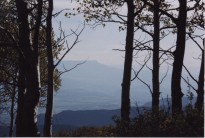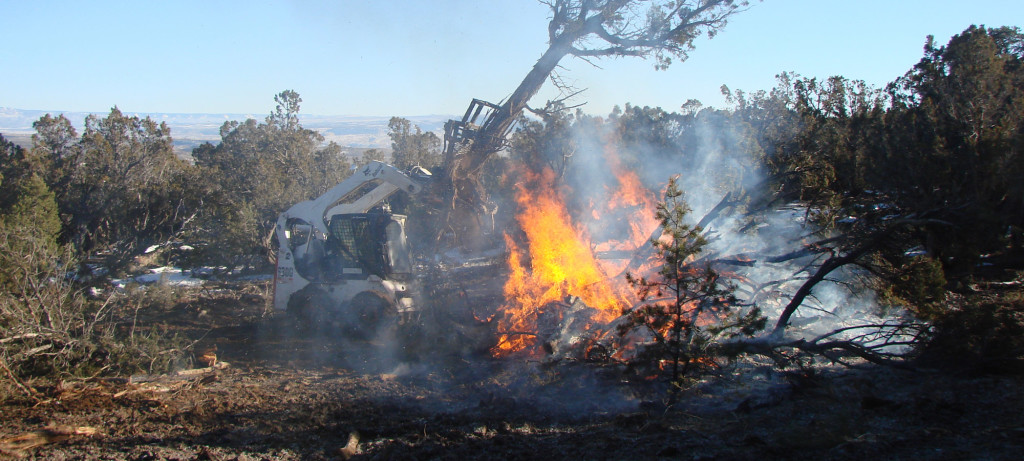The Habitat work that the Colorado Mule Deer Association does is only part of what we do, yet is an integral part of why we exist. Why is that part of our mission important to us? Why should it be important to you? Let’s take a quick look at it in the most basic of terms.
Animals require many of the same things you and I do. They require shelter, they require good food and water, they require safety. If you can provide any or all of these in their home areas, you can contribute to their health & survival. If you can contribute these to enough such areas, you can re-establish an area (or a herd). We utilize our habitat work to provide such areas.
Over recent years, we have worked in multiple areas from Battlement Mesa to Cedaredge on the Western Slope of Colorado that have been overgrown with Cedar / Juniper stands and Oak Brush. These are very prolific varieties of vegetation that limit sunlight & nutrients to the ground below. If there is not a good food source within (or around) these areas, then all you have is some great cover. This goes for both predator & prey as well. By going into such areas & creating a mosaic pattern of cleared / thinned areas of the heavy vegetation, it provides the opportunity for native plant life to retake these openings for feeding areas. By then supplementing these native grasses with additional forage options, we provide high protien feeding areas mixed in with the cover (shelter) that they also require. As we don’t clear-cut areas, it may take 150+ acres to create 50 acres of habitat.
The next question we always get asked is why do we do such projects on private lands? As a hunter who spends time on public land, why should I care? Read on and I’ll explain. Don’t get us wrong, we work with and applauded the work done by our local, state and federal entities who deal with our public lands and the hunters / sportsmen who enjoy those lands. In the most basic definition of what these organizations do, they manage the lands for those individuals who utilize them. The farmer and rancher on the other-hand, manage their lands for the animals.
So, again as an individual who knows where those private fence lines are and never cross them, why should I care what happens over there on that ranch? It truly is a trickle-down (or trickle-out) benefit for that hunter on public land. You can’t re-establish an area (or a herd) by killing or scattering every deer in the area every fall. Part of what a healthy herd requires is safety. A successful habitat project area is one in which generations of deer and elk can be raised in the same area … not just one or two. So, how does this trickle-down to the public land hunter?
Every year, the dominant males & females of the species will claim the areas they choose to. Those younger animals (or the previous dominant animal in the area) will compete for a while, but will eventually move out to the secondary areas, where they’ll compete & will then become the dominant animals in that secondary area, or they’ll move out & re-compete again in that new area. At some point in time, there will be animals that will leave the safety of the ranch to compete in other areas. And, at any time, one of the “old timers” can cross that fence or that road as they go about their normal business. By creating an area that perpetuates this natural selection of the dominant animals, it also creates groups that leave the confines of the ranch year after year to compete in other areas.
The last part of this process is also what happens on the ranch on behalf of the animals. The food choices (both native) and introduced as additional forage tend to be of a higher protein content that what is available on the public land. When working on State or Federal lands, we’re bound to only replant native species. Private lands are not bound by these regulations and tend to opt for much more nutritious varieties of feed. These land stewards also tend to have an active predator control program on their properties which is not always available on the public side of the fence. All of this put together tends to create pockets on the Western Slope of Colorado that try to provide everything that the animals need to survive and thrive. A good source of food and water, a place to hide during the day, and a thinning of the predators all works to maintain and increase a local herd. Over time, this works to improve the over-all area.
This is why our habitat projects are so important.
Eric Pennal – CMDA Board Member since 2007

